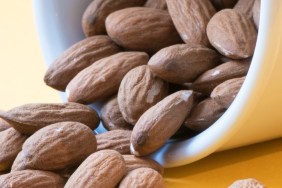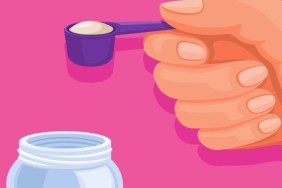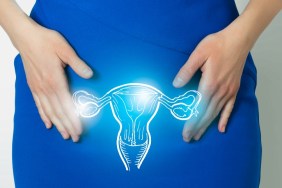Endometriosis is a disease that no one really talks about and yet it’s estimated that it affects one in ten women. Think about that. As I write this while sitting in a crowded coffee shop and look around me, there’s a good chance I’m not the only woman here with endometriosis or “endo” as those who have it know it. It’s painful. It can be the cause of infertility and it has no cure. It’s a lifelong ailment. And because it has to do with your lady parts, we just don’t talk about it that much.
What exactly is it? Endometriosis is a disease of the reproductive organs. It occurs when endometrial tissue (these are the cells that line your uterus) appear anywhere outside of the uterus. The cause of endometriosis is unknown.
In my case, I began to experience symptoms of it in my teens when I suffered from heavy and painful, irregular periods. My family doctor chalked it all up to hormones or possibly polycystic ovarian syndrome (PCOS), which is a common disorder that causes an imbalance in hormones. At 14-years-old—and I guarantee you not because I was sexually active!—my doctor prescribed birth control pills to even everything out. Imagine trying to explain that to most of my friends. “They’re not for sex, they’re for my hormones.”
I felt weird. I was hurting and I was confused, but I took the pill every day just like my doctor told me to. And I was on the pill until the day I decided to get pregnant with my first child. That’s when the discomfort got worse. As far as I can tell–or based on what doctors think happened–without the regularity of birth control pills, endometrial tissue began to build up month to month and each cycle that I tried for a baby, my pain got worse and worse. My periods became more irregular. I had one cycle that was 64 days long, another that was 42 days, followed by one that was 36 days, then 60 days again. I felt crazy. I suffered from excruciating abdominal pain and bloating. And when I did have a period, it was so heavy that I had to start taking iron supplements because I became anemic.
After trying to conceive for a year and a half and discovering I had a blocked fallopian tube, my doctor finally recommended laparoscopic surgery. It sounded like I might be suffering from endometriosis, he said, but the only sure way to find out was to have surgery. During a laparoscopic procedure, a surgeon can look into your abdomen and uterus using a camera that’s inserted through three small incisions, and then excise foreign tissue.
When I woke up from surgery, confused and sleepy-eyed, my doctor told me the news. Endometriosis had taken over my abdominal cavity and it was so bad that the tissue had grown on my bowel wall and over one of my fallopian tubes making it nearly impossible for a healthy pregnancy. He had to remove that tube, but was able to keep my other one.
The good news? After having the surgery, I was able to get pregnant. The not-so-good news? A side effect of having a vaginal delivery is scarring which for someone who has endometriosis means more tissue build up. So, since having my first baby, I’ve had a second surgery.
Today, I’m working with an endocrinologist, a surgeon and a pain management specialist to figure out what therapy is best. It’s likely I will have one more surgery this fall and then another before I hit menopause. Gulp. For now, there are steroid injections I can get in my stomach and I do physical therapy to rebuild the muscles in my pelvic floor as well as to combat sciatic nerve pain (also a common side effect of endometriosis).
But on bad days, when no amount of ibuprofen seems to work, I feel like someone is punching me in the gut or like someone is pulling on my insides. It feels like I’ve just done two hundred sit ups and can’t get my stomach to relax. My abdomen throbs in tight, irritating pain. Sometimes it’s so bad I can’t sleep. For a few days each month, when my period is at its worst, I don’t even want to leave the house. Endometriosis has definitely inhibited my lifestyle. I now try to schedule important meetings or appointments when I know I won’t be having my period so that I feel better and can cope.
As a result of endometriosis I’ve also developed premenstrual dysphoric disorder. This means that the extra scar tissue has sent my body into overdrive and my hormonal symptoms are more severe. During the first part of my cycle, when there’s less build up and I’ve just had a period, I feel good, energetic and healthy. I don’t suffer from pain or other difficulties as much. But from ovulation on, during the second half of my menstrual cycle, I am so tired I can’t see straight. And all of that pain and uncomfortable bloating returns full force. I now see a psychiatrist who, along with my doctor, is hoping a shift in medication or an earlier surgery will mean that I’m not so miserable for half of every month (half of every year, half my life!).
There is no easy answer to the puzzle of endometriosis, but there is more information out there than there used to be. Even so, just like with any other disease, a woman must be a strong advocate for her health and wellbeing. If you suffer from endometriosis, or think you might, see your doctor and bring along a list of your symptoms. It took years before I was diagnosed. And, sadly, it’s typical that it takes ten to 12 years before a woman is correctly diagnosed with endometriosis since the disease mimics symptoms of other diseases and disorders like IBS (irritable bowel syndrome) and chronic fatigue.
Bottom line? Don’t be afraid to talk about your period or any other uncomfortable symptoms you’re having. According to the Endometriosis Foundation of America, the most common symptoms are abdominal pain during the menstrual cycle and infertility. Other symptoms you shouldn’t ignore: pain during sex and painful bowel movements.
More Mom Confessions:
- All the Reasons Why My Kid’s Friends Stress Me Out
- 21 Truths About Motherhood Every Mom Knows
- 24 Things I’ll Never Say in Front of My Daughter
Photo: Getty








